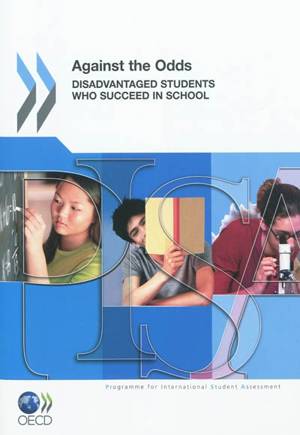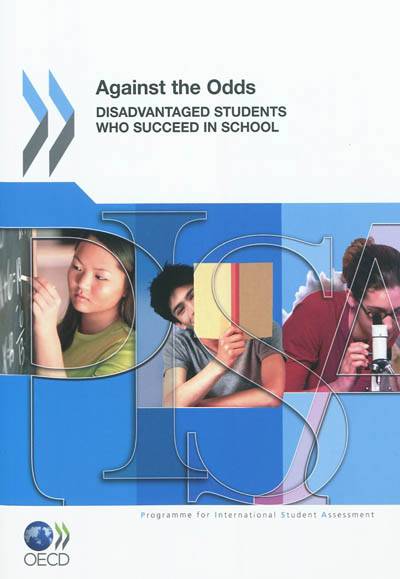
- Retrait gratuit dans votre magasin Club
- 7.000.000 titres dans notre catalogue
- Payer en toute sécurité
- Toujours un magasin près de chez vous
- Retrait gratuit dans votre magasin Club
- 7.000.0000 titres dans notre catalogue
- Payer en toute sécurité
- Toujours un magasin près de chez vous
PISA Against the Odds
Disadvantaged Students Who Succeed in School
Organisation de coopération et de développement économiquesDescription
Against the Odds
Disadvantaged students who succeed in school
Many socio-economically disadvantaged students excel in PISA. Students who succeed in school despite a disadvantaged background, known as resilient students, are the focus of Against the Odds. The book provides students, parents, policy makers and other stakeholders in education with insights into what enables socio-economically disadvantaged students to fulfil their potential.
The more hours disadvantaged students spend learning science at school, the better equipped they are to close the performance gap with their more advantaged peers. Resilient students are also found to have positive approaches to learning, including an active interest in science and greater self-confidence. However, the evidence in PISA shows that positive approaches to learning tend to boost the performance of advantaged students more than that of disadvantaged young people. From an equity perspective, the PISA results suggest that policies aimed at fostering positive approaches to learning should target disadvantaged students more than others.
Chapter 1. PISA as a study of student resilience
Chapter 2. Defining and characterising student resilience in PISA
Chapter 3. A profile of student resilience
Chapter 4. Closing the gap ? Enhancing the performance of socio-economically disadvantaged students
Chapter 5. Conclusions and policy implications
The oecd programme for international student assessment (PISA)
PISA focuses on young people's ability to use their knowledge and skills to meet real-life challenges.
This orientation reflects a change in the goals and objectives of curricula themselves, which are increasingly concerned with what students can do with what they learn at school and not merely with whether they have mastered specific curricular content. PISA's unique features include its :
Policy orientation, which highlights differences in performance patterns and identifies features common to high-performing students, schools and education systems by linking data on learning outcomes with data on student characteristics and other key factors that shape learning in and outside of school.
Innovative concept of « literacy », which refers both to students' capacity to apply knowledge and skills in key subject areas and to their ability to analyse, reason and communicate effectively as they pose, interpret and solve problems in a variety of situations.
Relevance to lifelong learning, which goes beyond assessing students' competencies in school subjects by asking them to report on their motivation to learn, their beliefs about themselves and their learning strategies.
Regularity, which enables countries to monitor their progress in meeting key learning objectives.
Breadth of geographical coverage and collaborative nature, which, in PISA 2009, encompasses the 34 OECD member countries and 41 partner countries and economies.
Spécifications
Parties prenantes
- Auteur(s) :
- Editeur:
Contenu
- Nombre de pages :
- 211
- Langue:
- Anglais
Caractéristiques
- EAN:
- 9789264089952
- Date de parution :
- 20-07-11
- Format:
- Livre broché
- Dimensions :
- 209 mm x 277 mm
- Poids :
- 468 g

Les avis
Nous publions uniquement les avis qui respectent les conditions requises. Consultez nos conditions pour les avis.






